%20logo.jpg)
%20logo.jpg)
Latest 50MHz DX spots
If you cannot see the full index shown on the left edge of your screen, please go to my main page at
50MHz is probably the easiest VHF band to achieve regular long distance (DX) communications, but radio conditions can vary tremendously depending on the time of year and the solar cycle. The best time of year is from MAY to AUGUST during the Sporadic-E season, where with low power and simple aerials anyone can work most of Europe up to 2,400km distance from your station and with very strong signal strengths in both directions.
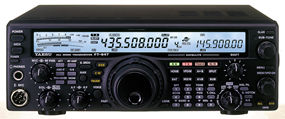

Double hop Sporadic-E is sometimes seen in the Summer with distances in the order of up to 4800km to areas like Israel (4X) or the Canary islands (EA8). Some distances worked when at solar minimum in June and July 2007 have been in the order of 6000km to parts of the USA. this is likely to be rarer triple hop Sporadic-E. It cannot be F2 layer reflections as we were at solar minimum in 2007.
However, outside of the summer months conditions can generally be poor and the band appear totally deserted. There are exceptions as at the maximum of the solar cycle when 50MHz signals are reflected by the F2 layer just like on HF and it is possible to work all continents including Australia! The pileups can be frustrating to break though.
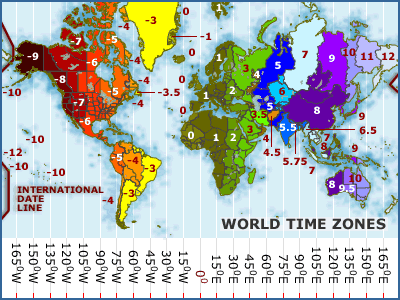
Also it is possible at all times of year to work stations in Europe up to 2,400km away by bouncing your signals off the ionised trails left by meteors entering the Earth's atmosphere. You will need WSJT software and a computer linked by a soundcard interface to your USB transmitter, but there is plenty of Meteor Scatter activity, most mornings and evenings, around 50.280 MHz using MSK144 mode. You will also need a directional aerial for best results, however you can work MS as I have done with a vertical colinear!. N.B. 50 MHz is considered poorer than 144 MHz for tropo scatter communications.
|
|
|||||||
| Distance | Less than 100km | 100-500km | 500-800km | 800-2400km | 2400-4800km | 4800-7200km | Over 7200km |
| Propagation type | Line of Sight (LOS) |
Tropo Scatter (TRS) |
|||||
|
Tropo Ducting (TRD) |
TRD + Sporadic-Es | ||||||
| Aurora (AU) | |||||||
|
Sporadic-Es (ES)*Exceptionally high MUF only* |
Sporadic-Es (ES)x1 hop | Sporadic-Es (ES) x2 hops | Sporadic-Es (ES) x3 hops | ||||
| Meteor Scatter (MS) | Trans Equatorial Propagation (TEP) | TEP + Sporadic-Es | |||||
|
Aircraft
Scatter (AS) <------VHF UHF------> |
|
F2 Layer reflection (F2) | |||||
| Required conditions or assists with ID | True Line of Sight is up to 50km, but can be extended by height i.e. elevation ASL or by diffraction (LOS) | Stable High Air Pressure, as often seen associated with fog (TRD) | Raspy distorted tone & audio distortion (AU) | Usually May to August with peak in June, small opening in December possible near Equinox (ES) | Sea path required for longest rare distances (TRD) | Distances of around 5000km on 144MHz reported June/July 2019 | Often misidentified as ES alone on DXcluster, which is impossible. Main distance component is TEP and both stations need to be on opposite sides of Magnetic Equator |
| Typically around 4 minutes duration (AS) | Mostly short duration pings of seconds or shorter, but can be minutes (MS) | Stations need to be either side of Magnetic Equator (TEP) | Favours Autumn to Spring months during Solar Cycle Peaks, approx every 11 years | ||||
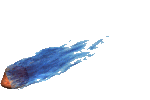
|
PRIMARY EUROPEAN METEOR SCATTER FREQUENCIES & DATA MODES |
||
|
Old Region 1 Band plan had 50.200-50.300 MHz for Meteor Scatter (still largely in use as of 2017) |
||
|
FREQUENCY |
MODE |
COMMENT |
|
|
JT6M (30s periods)
|
Most European MS activity was seen here in 2016, but in 2017 has declined dramatically in favour of MSK144 mode on 50.280 MHz. |
| 50.280 MHz* (+/- 15 kHz) | MSK144 (15s periods) | 99% European activity this mode and frequency, seen here since 2018, with 15s periods and extremely popular. Software in use is either WSJT-X by K1JT or MSHV by LZ2HV |
|
New Region 1 Band plan since 2012 suggests 50.320-50.380 MHz for Meteor Scatter
|
||
|
FREQUENCY |
MODE |
COMMENT |
| 50.360 MHz | MSK144 | Designated frequency as of 2018 for this newer mode, but 99% of activity remains on 50.280 MHz |
| 70.174 MHz | MSK144 |
99% European activity this
mode seen here since 2018
|
| 144.360 MHz | MSK144 |
Designated frequency as of
2018 for this newer mode
|
|
NOTES |
||
|
It is also best practice when calling CQ to indicate another frequency you are listening on, for example CQ 270 when calling on 50.280 MHz, meaning you are listening for replies on 50.270 MHz and as soon as you hear one you QSY your transmissions there also.
|
||
|
PRIMARY EUROPEAN WEAK SIGNAL FREQUENCIES & DATA MODES FOR OTHER NON METEOR SCATTER PROPAGATION TYPES |
||
|
FREQUENCY |
MODE |
COMMENT |
| 50.230 MHz* | JT6M | Combination Meteor Scatter or Aircraft Scatter (ACS)or Sporadic-E, very active in 2016, much less so in 2021 |
| 50.250 MHz* | PSK31 | SPORADIC-E / F2 Transatlantic / Tropo was active 2017 |
| 50.276 MHz* | JT65A | SPORADIC-E / F2 Transatlantic was active 2017 |
| 50.278 MHz* | JT9-1*** | SPORADIC-E / F2 Transatlantic (was 50.293 until 19th July 2013) (Poor mode at 50 MHz due to Doppler shift making signal decoding poor) |
| 50.293 MHz* (+ >1500Hz) | WSPR | US / EUROPE* |
| 50.305 MHz | Q65 30S Mode A | New 2021 WSJT-X 2.4.0 Q65 European frequency for Scatter, note USA frequency is 50.275 MHz |
| 50.313 MHz | FT8 | 99% European activity with this new fast mode seen since 2017, seems very well suited to Sporadic Es propagation |
| 50.323 MHz | FT8 | Intercontinental calling, Europe transmits 1st and USA 2nd period |
| 50.330 MHz | JT6M | 5% European activity this mode seen here 2013 |
| 50.401 MHz (+/- 500Hz) | WSPR | New Region 1 Band plan |
| 70.154 MHz | FT8 | Used extensively in Europe since 2018 during Sporadic-E summer season |
|
NOTES |
||
|
*The new Region 1 (European) band plan, that came into effect on 1st January 2012, was largely being ignored by the VHF community, as all data modes in Europe were recommended to move above 50.300 MHz to free up space for more SSB voice, however 50 MHz is very often capable of Intercontinental communications and there remained much US data activity below 50.300 MHz so that is possibly why stations had remained on the old frequencies to work each other. Since around 2020 and with FT8 data mode a specific frequency for Intercontinental working Europe to USA has been established on 50.323 MHz *** From my own observations JT9 mode does not work at all well on 50 MHz, compared with JT65A which does work well, this appears to be due to JT9 signal drift/Doppler and leads to signals not being easily decoded, if at all, despite being strong on your display. |
||
|
50 MHz Links |
|||
|
|
|||
|
|
|||
|
|
|||
|
|
|||
|
|
|||
|
|
|||
|
|
|||
|
Asia, Australia & Pacific Islands TV frequencies 45-57 MHz
|
|||
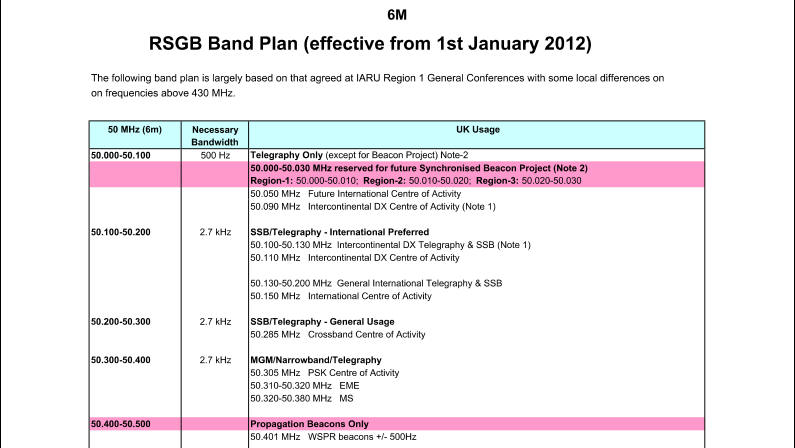
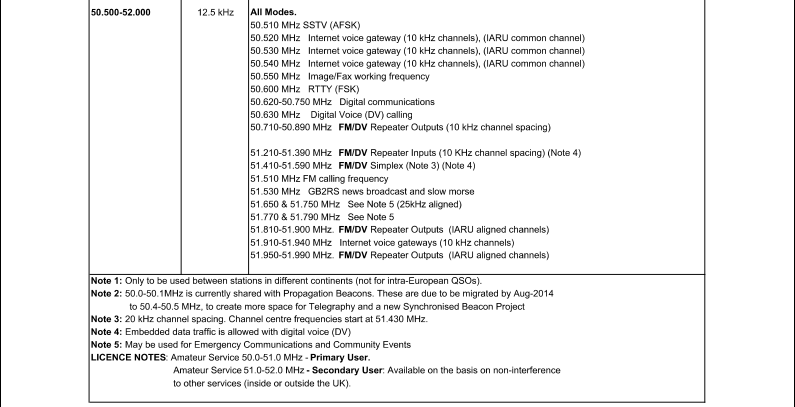
|
VHF DX Year Planner |
|
|

One of the very best and easiest ways to work DX from the UK on the 50 MHz (6 metres) band is via the Sporadic E propagation for which the season usually occurs between May - August each year. With low power it is possible to work all over Europe via single hop or as far as Israel and Cyprus via double hop propagation. Many theories exist for the cause of Sporadic-E propagation.
In 2011 there remained a few Band 1 TV transmitters in Europe that could still be used to monitor for Sporadic-E openings, before they appear on the Amateur Radio bands, due to their very high power levels. The TV station in Prague, JN79 locator square, on a carrier frequency of 49.740 MHz CW being very useful. The Sporadic-E clouds are often associated with thunderstorms.
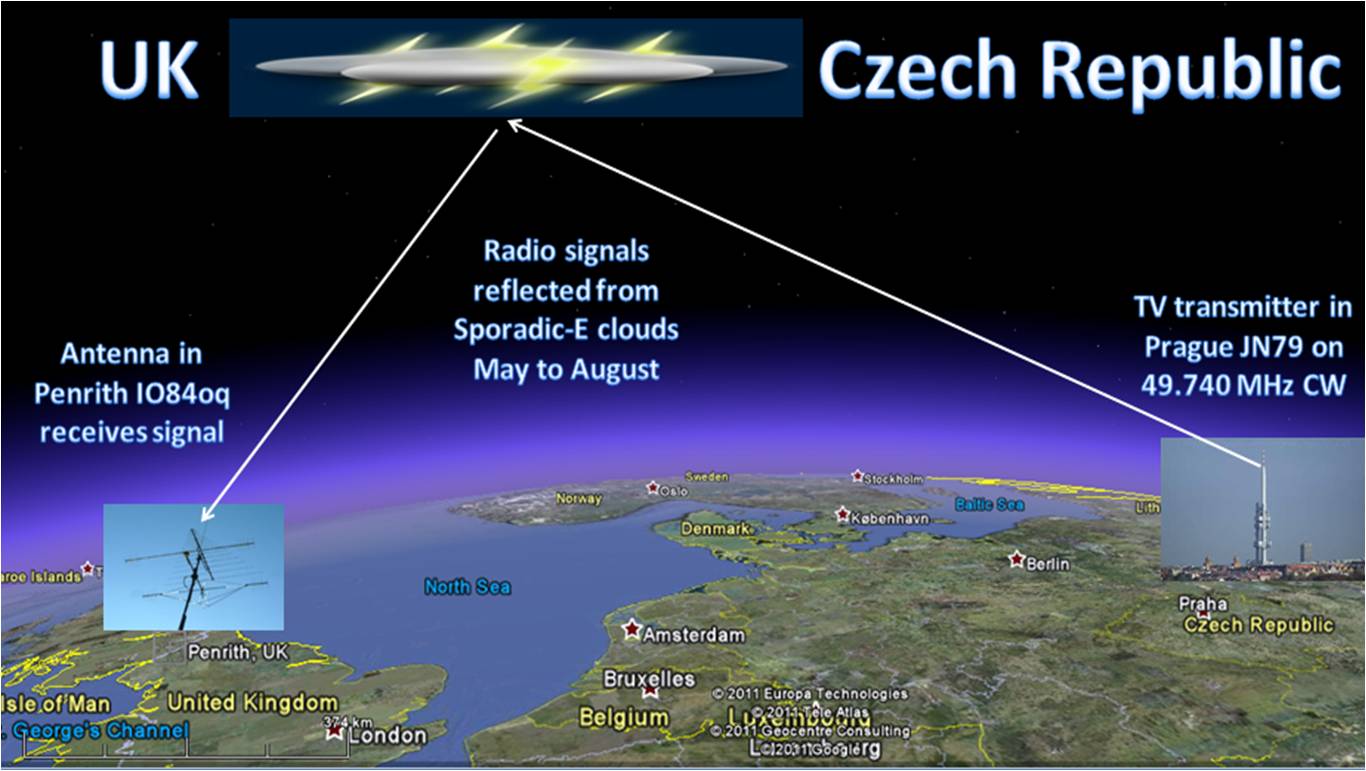
On the evening of Tuesday 1st August 2006 at around 1930-2030 UTC there was an intense Sporadic E opening from the UK in the less common direction of Scandinavia. Shown below is a map indicating the DX being worked from the UK. There is a distinct concentration of reflecting areas just to the West of Denmark over the North Sea.

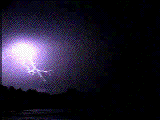
When I viewed the animated lightning map for Europe, I was able to observe that throughout the day there had been multiple lighting strikes near Denmark and therefore thunderstorms. This would appear to show that there might be a link between the two, however extensive observations have shown multiple instances of zero thunderstorms, so it is assessed that thunderstorms may enhance Sporadic-E, but are not essential for it to occur. Or else it is entirely coincidental that thunder storms are mostly occurring in the Summer months, the same time as for Sporadic-E.
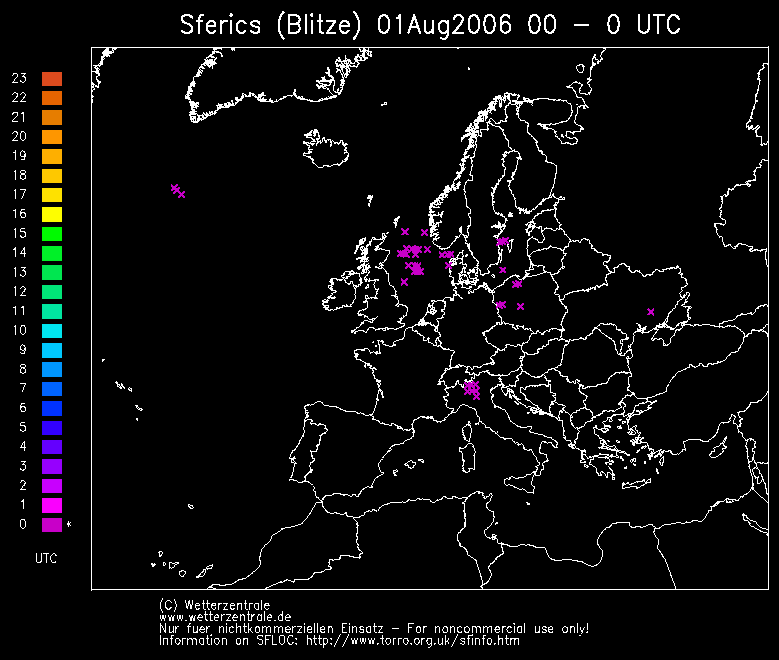
In my experience by far the best way to monitor band conditions on 50 MHz was to monitor Band 1 VHF TV video carrier frequencies. These television transmitters often used many kW's of Effective Radiated Power (ERP) and signals could be detected before weaker amateur radio transmissions. In Navacerrada, Spain the TV video carrier on 48.250 MHz CW, locator square IN70, was, until 2010, almost always heard here in the UK when there was the slightest Sporadic E propagation, it could be heard as pings via MS reflections at all times. The map below shows some historical stronger 100kW+ TV transmitter sites in Europe, together with their channel number from 1-4, their ERP in brackets and their polarisation h - horizontal or v - vertical.
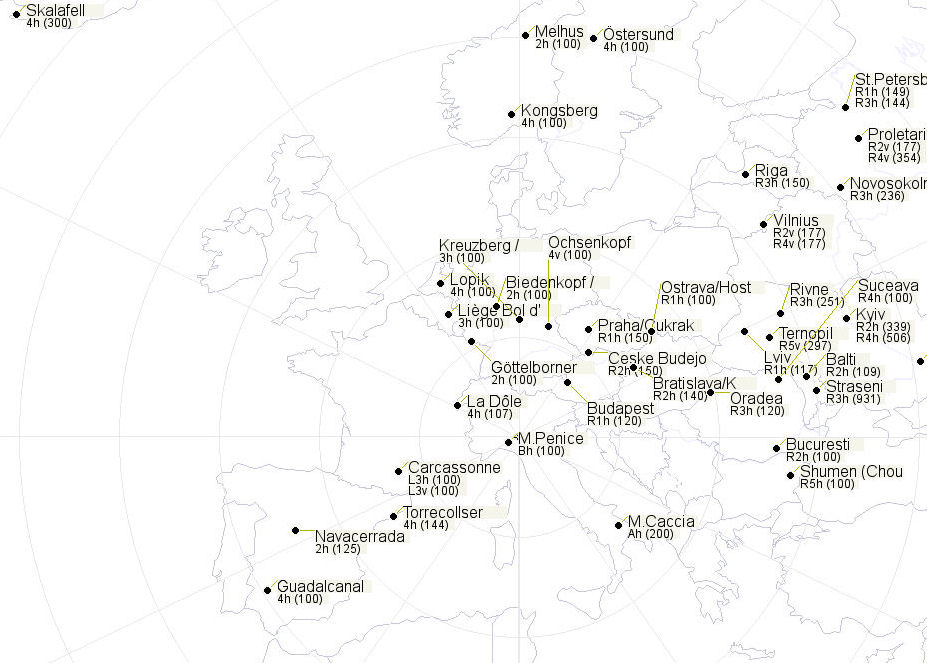
N.B. I have been advised from several sources, over the last few years, that Spanish Band 1 VHF TV transmissions would eventually cease as UHF TV takes over, although I was still receiving these transmissions in 2007. The latest information I have is that analogue TV in Spain has finally ended in 2010.
Most European Countries are closing down their Band 1 TV transmissions, so time is running out to monitor the signals as 50 MHz propagation indicators.
Below is a table of Band 1 TV carrier frequencies, which I always used to monitor and which showed Sporadic E propagation before it appeared on the Amateur 50 MHz band, due to the extremely strong TV RF power levels measured in kW.
| TV Carrier Frequency (CW) | Locator | Comment |
| 48.250 MHz |
IN70 Spain |
Earliest indicator of Sporadic E
(This now been shut down in 2010) |
| 49.739.68 MHz |
JN79 Czech Republic |
Sporadic E indicator
|
| 49.750 MHz |
KO33 Russia |
Sporadic E indicator
|
| 49.760.46 MHz |
KO07 Latvia |
Sporadic E indicator
|
| 55.250 MHz |
JO20 Belgium |
Due to the short distance away, if this is heard consider also 144MHz Es |
When the F2 layer is open on 50 MHz early warnings can be made by monitoring an Australian, Queensland TV video carrier on 46.171 MHz CW (power 300kW) or an American TV video carrier on 55.250 MHz CW. These will not be heard near solar minimum. I was able to receive the Australian TV carrier back in 2001. The tables below show the Band 1 TV video carrier frequencies, which can be heard on amateur radio transceivers using CW mode and sound like a constant carrier.

|
|
|
|
50MHz European Beacons |
|||
| Frequency | Callsign | Locator | |
|
|
50.000 | GB3BUX | IO93 |
|
|
50.004 | I0JX/B | JN61 |
|
|
50.010 | SV9SIX | KM25 |
|
|
50.013 | CU3URA | HM68 |
|
|
50.014 | S55ZRS | JN76 |
|
|
50.016 | GB3BAA | IO91 |
|
|
50.021 | OZ7IGY | JO55 |
|
|
50.023 | SR5SIX | KO02 |
|
|
50.025 | OH1SIX | KP11 |
|
|
50.026 | 9H1SIX | JM75 |
|
|
50.028 | SR6SIX | JO81 |
|
|
50.029 | SR8SIX | KN19 |
|
|
50.030 | CT0WW | IN61 |
|
|
50.032 | CT0SIX | IM56 |
|
|
50.035 | ZB2VHF | IM76 |
|
|
50.040 | SV1SIX | KM17 |
|
|
50.043 | YO2S | KN05 |
|
|
50.042 | GB3MCB | IO70 |
|
|
50.047 | 4N1SIX | KNO4 |
|
|
50.047 | JW7SIX | JQ78 |
|
|
50.050 | GB3NHQ | IO91 |
|
|
50.051 | LA7SIX | JP99 |
|
|
50.052 | PA3FYM | JO22 |
|
|
50.052 | SK2CP | KP07 |
|
|
50.055 | OZ6SIX | JO57 |
|
|
50.057 | TF3SIX | HP94 |
|
|
50.058 | HB9SIX | JN47 |
|
|
50.060 | GB3RMK | IO77 |
|
|
50.064 | GB3LER | IP90 |
|
|
50.065 | GB3IOJ | IO89 |
|
|
50.067 | OH9SIX | KP36 |
|
|
50.070 | SK3SIX | JP71 |
|
|
50.070 | EA3VHF | JN01 |
|
|
50.073 | ES6SIX | KO73 |
|
|
50.078 | OD5SIX | KM74 |
|
|
50.088 | YU1SIX | KN03 |
|
|
50.163 | IS0SIX | JM49 |
|
|
50.230 | F6IKY | JN35 |
|
|
50.499 | 5B4CY | KM64 |
|
|
|
||
|
|
Send formatted VHF DX Cluster spot |
|
|
|
If you cannot see the full index shown on the left edge of your screen, please go to my main page at © Copyright G0ISW. Page last modified 24th June 2023. All Rights Reserved. |
|||